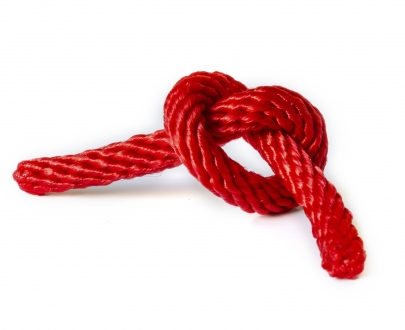 Group agreements are co-created guidelines that help participants feel comfortable with each other and set an atmosphere of safety and respect. Many teachers and facilitators skip this step when working with groups of youth and miss a powerful piece of prevention that can help make a group experience successful.
Group agreements are co-created guidelines that help participants feel comfortable with each other and set an atmosphere of safety and respect. Many teachers and facilitators skip this step when working with groups of youth and miss a powerful piece of prevention that can help make a group experience successful.
The following lesson plan from the Inner Resilience Program[1] is a process to create a set of group agreements. along with a physical symbol that can serve as a group reminder.
Materials Required:
- basket
- pieces of ribbon or rope (enough for each participant, and long enough to tie several knots)
- flip chart and markers
- timer
- music
Learning Outcomes:
-
Students will reflect on, and express opinions about factors that contribute to a safe and respectful group environment.
-
Students will work as a team to co-create group agreements.
Teaching & Learning Activities:
-
In the center of the circle, place a basket filled with pieces of ribbon. Invite students to take one and then go back to their seats.
-
When everyone is seated again, give the following instructions:
“Close your eyes if it feels comfortable to do so and, if not, simply let your eyes gaze downward and feel the ribbon in your hands. Ask yourself, What do I need to feel safe in this group? Once you know, tie a knot in the ribbon. (pause)
Now ask yourself, What does the whole group need in order to work effectively? Tie another knot in the ribbon once you have given yourself the answer. (pause)
Now open your eyes, and when the music starts, get up and walk around the room. You can smile and greet each other or shake hands or do high fives, but please stay silent. When the music stops, turn to the person closest to you. That person will be your partner.”
-
Start the music and let it play for 45 seconds. Stop the music. Instruct students to stand back-to-back with their partner and to take hold of the first knot they made. Remind students that during the next step, one person will be speaking and one person listens. When the chime rings, they will switch roles. Use a signal to indicate when the discussion is over such as raising hands. Give the following instructions:
“In a moment, turn around to face your partner, introduce yourself and share your answers to the first question: What do I need to feel safe in this group? You will have approximately 1 minute each.”
-
Ask students to go back-to-back again and before leading them through the second question. Instruct them to touch the second knot on their ribbon that represents the question, “What does the whole group need in order to work effectively?”
-
Initiate the second discussion session with the following instructions:
“Now turn around, decide who is going first, and take a minute each to share what came up for you. When you hear the chime, it means that it is time for your partner to have a turn. Again, when my hand goes up, raise yours.”
-
Have students return to their chairs but remain standing while silently tying the ends of their ribbons to the ribbons of the people on either side of them. Suggest that they think about what was shared in their pairs about what we need from each other to feel safe here.
-
When seated, have the group create a combined list of the ideas they discussed about safety. You may choose to record these comments on flip chart paper. If there are elements of group agreements that are not shared that are important to you, ask questions to generate more group discussion (link to creating group agreement resource).
-
After you have a list of agreements written on chart paper on the wall, ask the participants to lift the circle over their heads and behind their backs, continuing to hold onto it.
“The ribbon represents our Circle of Safety. We are all inside that circle now. We hope that we will all be able to work at making this experience safe for everyone to speak honestly without fear of being judged. Let’s put the ribbon on the ground and step back out of the circle. We’ll leave it on the floor in the center as a reminder to us about our agreements. Please go back to your seats. Thank you.”
The Inner Resilience Program was founded by Dr. Linda Lantieri in response to the effects of the events of September 11, 2001 in New York City schools. The original intention was to integrate social and emotional learning with contemplative practices to enhance support to school staff and parents in the healing process.
The expansion of the program (around the world) reflects the need to address the level of stress experienced by teachers and children within and outside schools. The Inner Resilience Program is helping adults and students reclaim their schools as caring and mindful communities of learning.
